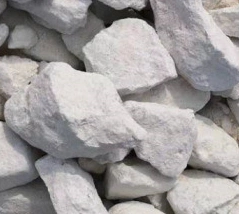Characteristics of White Talc Pigment
2024-06-15
White talc pigment, also known simply as talc, is a mineral that is widely used as a pigment in various industries, including paints, coatings, plastics, ceramics, and cosmetics. Here’s an overview of its characteristics, applications, and considerations:
Characteristics:
1. Color and Appearance:
- White: Talc is naturally white or off-white in color, which makes it suitable for use as a white pigment.
- Fine Powder: It is typically ground into a fine powder with a smooth texture.
2. Chemical Composition:
- Mineral: Talc is composed primarily of magnesium, silicon, and oxygen (Mg3Si4O10(OH)2).
- Softness: Talc has a characteristic softness and is often used as a filler or extender in various applications.
3. Physical Properties:
- Luster: Talc has a pearly or greasy luster when in powder form.
- Mohs Hardness: Talc has a Mohs hardness of 1, making it one of the softest minerals.
Applications:
1. Paints and Coatings:
- Talc is used as a pigment in paints and coatings to impart opacity, brightness, and smoothness to the finished product.
- It enhances the covering power of paints and contributes to their ease of application.
2. Plastics and Rubber:
- In plastics, talc acts as a reinforcing filler, improving stiffness, dimensional stability, and impact resistance.
- In rubber, it enhances processing properties and provides barrier properties.
3. Cosmetics:
- Talc is a common ingredient in cosmetics such as face powders, blushes, and eyeshadows due to its ability to absorb moisture and provide a silky feel.
4. Ceramics:
- Talc is used in the production of ceramics to improve firing characteristics and enhance surface smoothness.
5. Paper and Pulp:
- Talc is used as a filler and coating pigment in the paper industry to improve opacity, smoothness, and printability.
Considerations:
1. Health and Safety:
- Talc is generally considered safe for use in consumer products when properly formulated and processed.
- There have been concerns about talc contaminated with asbestos fibers in the past, prompting strict regulations and quality controls in its mining and processing.
2. Regulatory Compliance:
- Regulatory standards may vary by region, especially regarding the purity and absence of contaminants such as asbestos.
3. Environmental Impact:
- Talc mining and processing can have environmental implications, including land disturbance and waste disposal considerations.
Suppliers and Availability:
- Talc pigments are available from various mineral suppliers and specialty chemical companies that cater to industries requiring pigments and fillers.
In summary, white talc pigment is valued for its natural whiteness, softness, and versatility across multiple industries. Its use as a pigment enhances the properties of various materials, from paints and plastics to cosmetics and ceramics, contributing to product performance and aesthetic appeal.



